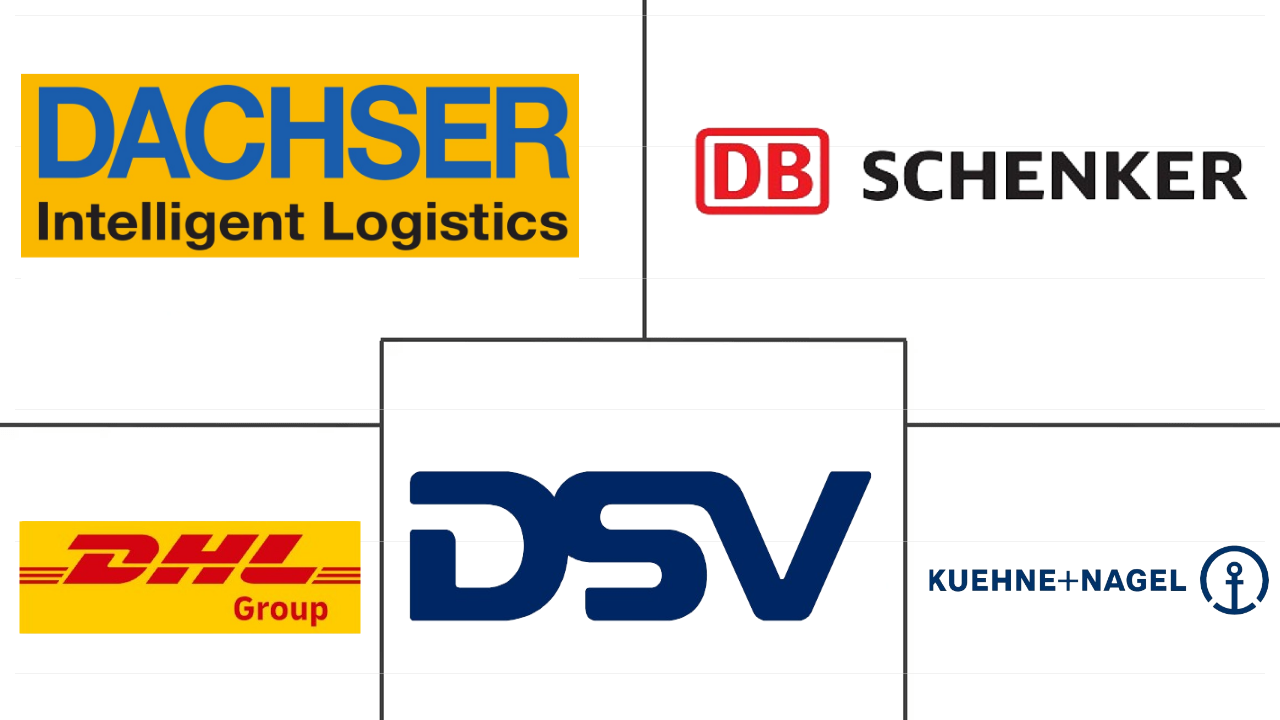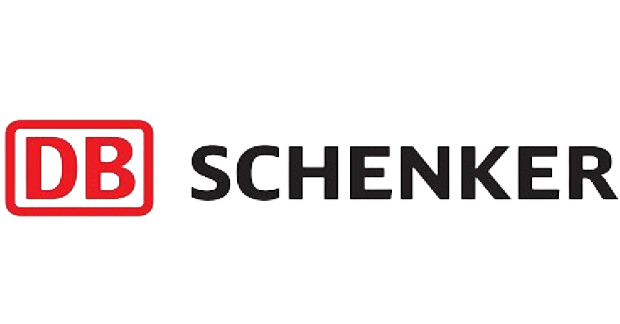Market Size of germany road freight transport Industry
| Icons | Lable | Value |
|---|---|---|
|
|
Study Period | 2017 - 2030 |
|
|
Market Size (2024) | USD 63.88 Billion |
|
|
Market Size (2030) | USD 76.23 Billion |
|
|
Largest Share by End User Industry | Manufacturing |
|
|
CAGR (2024 - 2030) | 2.99 % |
|
|
Fastest Growing by End User Industry | Wholesale and Retail Trade |
|
|
Market Concentration | Low |
Major Players |
||

|
||
|
*Disclaimer: Major Players sorted in no particular order |
Germany Road Freight Transport Market Analysis
The Germany Road Freight Transport Market size is estimated at 63.88 billion USD in 2024, and is expected to reach 76.23 billion USD by 2030, growing at a CAGR of 2.99% during the forecast period (2024-2030).
63.88 Billion
Market Size in 2024 (USD)
76.23 Billion
Market Size in 2030 (USD)
2.30 %
CAGR (2017-2023)
2.99 %
CAGR (2024-2030)
Largest Market by Distance
73.54 %
value share, Long Haul, 2023
Long-haul trucking is significant in Germany for cross-border freight. Exports in Germany recorded a growth of 1.54% YoY in 2022, while imports recorded a growth of 10.46% YoY.
Largest Market by Goods Configuration
75.36 %
value share, Solid Goods, 2023
Solid goods trucking is expected to remain a major contributor during the forecast period. For solid goods distribution, in 2022, over 312,000 commercial vehicles were sold in Germany.
Largest Market by End User Industry
31.21 %
value share, Manufacturing, 2023
Additive manufacturing (AM) is becoming more popular globally. In Europe, AM is expected to register a CAGR of 20.7% during 2023-2030, and Germany is the largest market in Europe.
Fastest Growing Market by Truckload Specification
3.35 %
Projected CAGR, Less than-Truck-Load (LTL), 2024-2030
The less-than-truckload segment is growing in Germany as the e-commerce market is expected to boom further and reach USD 148.57 billion by 2027.
First Leading Market Player
15.34 %
market share, DB Schenker, 2022

DB Schenker operates with 15,000 employees at more than 100 locations in Germany. The company has had a presence in Germany for around 150 years.
Construction output is expected to pick up from 2024 in Germany and drive the demand for road freight services
- The manufacturing end-user segment experienced growth in 2022, mainly due to the rise in human-robot collaborations that boosted production. Germany was the fifth-largest robot market worldwide in 2021, with around 22,000 robots used in different industries, making up 6% of all robot installations in the world. In addition, additive manufacturing is becoming more popular worldwide. In Europe, additive manufacturing is expected to record a CAGR of 20.7% between 2023 and 2030. Germany is the largest market in Europe and is expected to grow up to 15% in the coming years and drive the demand for road freight services.
- In 2022, the wholesale and retail trade end-user segment of the German road freight market experienced growth as consumer durable retail sales grew by an estimated 1.50% YoY. This was supported by an increase in private consumption by an estimated 5.40%. Germany's retail and wholesale trade sector has been growing and performing robustly over the past few years. Retail and wholesale trade witnessed an expansion of 11.54% in 2020 when the pandemic hit, essential commodities were massively demanded by the population, and online shopping followed an upward trajectory.
- The increased government spending on infrastructure projects is expected to drive the growth of the construction end-user segment. Construction output is expected to pick up from 2024, supported by investments in the transport, renewable energy, housing, and manufacturing sectors. Moreover, the rise in agricultural exports is expected to support the agriculture, fishing, and forestry end-user segment. Organic agricultural production is expected to increase in the coming years as Germany's new coalition government aims to have 30% of the country's cultivated land under organic management by 2030.
Germany Road Freight Transport Industry Segmentation
Agriculture, Fishing, and Forestry, Construction, Manufacturing, Oil and Gas, Mining and Quarrying, Wholesale and Retail Trade, Others are covered as segments by End User Industry. Domestic, International are covered as segments by Destination. Full-Truck-Load (FTL), Less than-Truck-Load (LTL) are covered as segments by Truckload Specification. Containerized, Non-Containerized are covered as segments by Containerization. Long Haul, Short Haul are covered as segments by Distance. Fluid Goods, Solid Goods are covered as segments by Goods Configuration. Non-Temperature Controlled, Temperature Controlled are covered as segments by Temperature Control.
- The manufacturing end-user segment experienced growth in 2022, mainly due to the rise in human-robot collaborations that boosted production. Germany was the fifth-largest robot market worldwide in 2021, with around 22,000 robots used in different industries, making up 6% of all robot installations in the world. In addition, additive manufacturing is becoming more popular worldwide. In Europe, additive manufacturing is expected to record a CAGR of 20.7% between 2023 and 2030. Germany is the largest market in Europe and is expected to grow up to 15% in the coming years and drive the demand for road freight services.
- In 2022, the wholesale and retail trade end-user segment of the German road freight market experienced growth as consumer durable retail sales grew by an estimated 1.50% YoY. This was supported by an increase in private consumption by an estimated 5.40%. Germany's retail and wholesale trade sector has been growing and performing robustly over the past few years. Retail and wholesale trade witnessed an expansion of 11.54% in 2020 when the pandemic hit, essential commodities were massively demanded by the population, and online shopping followed an upward trajectory.
- The increased government spending on infrastructure projects is expected to drive the growth of the construction end-user segment. Construction output is expected to pick up from 2024, supported by investments in the transport, renewable energy, housing, and manufacturing sectors. Moreover, the rise in agricultural exports is expected to support the agriculture, fishing, and forestry end-user segment. Organic agricultural production is expected to increase in the coming years as Germany's new coalition government aims to have 30% of the country's cultivated land under organic management by 2030.
| End User Industry | |
| Agriculture, Fishing, and Forestry | |
| Construction | |
| Manufacturing | |
| Oil and Gas, Mining and Quarrying | |
| Wholesale and Retail Trade | |
| Others |
| Destination | |
| Domestic | |
| International |
| Truckload Specification | |
| Full-Truck-Load (FTL) | |
| Less than-Truck-Load (LTL) |
| Containerization | |
| Containerized | |
| Non-Containerized |
| Distance | |
| Long Haul | |
| Short Haul |
| Goods Configuration | |
| Fluid Goods | |
| Solid Goods |
| Temperature Control | |
| Non-Temperature Controlled | |
| Temperature Controlled |
Germany Road Freight Transport Market Size Summary
The Germany Road Freight Transport Market is poised for steady growth, driven by various sectors such as manufacturing, wholesale and retail trade, and construction. The manufacturing sector has seen a boost due to advancements in human-robot collaborations and the rise of additive manufacturing, positioning Germany as a leader in Europe. The wholesale and retail trade segment has expanded, supported by increased consumer spending and a robust e-commerce landscape. Government investments in infrastructure are expected to further stimulate the construction sector, while the agriculture, fishing, and forestry segments benefit from rising organic agricultural production. Germany's transportation industry plays a crucial role in facilitating trade both domestically and internationally, supported by its extensive and well-maintained road networks.
The market landscape is characterized by a fragmented structure with major players like Dachser, DB Schenker, DHL Group, DSV A/S, and Kuehne + Nagel holding significant shares. These companies are actively pursuing sustainability initiatives, such as DB Schenker's partnership with Volta Trucks for electric vehicles and Dachser's expansion of emission-free deliveries. Despite challenges like rising fuel costs and inflation, the market remains resilient, with ongoing investments in rail and road infrastructure to enhance efficiency and sustainability. The German government's focus on environmental protection and effective transportation is evident in its strategic investments, aiming to maintain Germany's position as a leading logistics hub in Europe and globally.
Germany Road Freight Transport Market Size - Table of Contents
-
1. MARKET SEGMENTATION (includes market size in Value in USD, Forecasts up to 2030 and analysis of growth prospects)
-
1.1 End User Industry
-
1.1.1 Agriculture, Fishing, and Forestry
-
1.1.2 Construction
-
1.1.3 Manufacturing
-
1.1.4 Oil and Gas, Mining and Quarrying
-
1.1.5 Wholesale and Retail Trade
-
1.1.6 Others
-
-
1.2 Destination
-
1.2.1 Domestic
-
1.2.2 International
-
-
1.3 Truckload Specification
-
1.3.1 Full-Truck-Load (FTL)
-
1.3.2 Less than-Truck-Load (LTL)
-
-
1.4 Containerization
-
1.4.1 Containerized
-
1.4.2 Non-Containerized
-
-
1.5 Distance
-
1.5.1 Long Haul
-
1.5.2 Short Haul
-
-
1.6 Goods Configuration
-
1.6.1 Fluid Goods
-
1.6.2 Solid Goods
-
-
1.7 Temperature Control
-
1.7.1 Non-Temperature Controlled
-
1.7.2 Temperature Controlled
-
-
Germany Road Freight Transport Market Size FAQs
How big is the Germany Road Freight Transport Market?
The Germany Road Freight Transport Market size is expected to reach USD 63.88 billion in 2024 and grow at a CAGR of 2.99% to reach USD 76.23 billion by 2030.
What is the current Germany Road Freight Transport Market size?
In 2024, the Germany Road Freight Transport Market size is expected to reach USD 63.88 billion.

